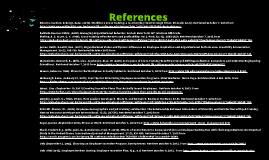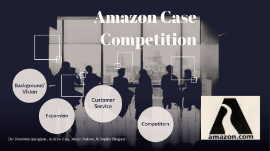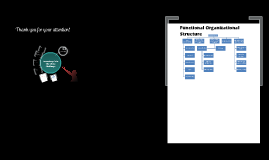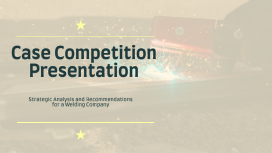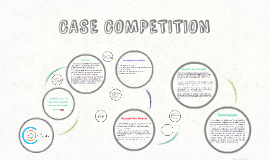Case Competition
Transcript: Cross Training Why should employees be cross trained? Cross Training as a form of recognition: Why? To increase overall knowledge Incentive Programs Prevent Undue Stress It is estimated that 75 to 90 percent of visits to health care providers are due to stress-related conditions, costing employers in increased health care costs. (Maxon) The company will also suffer do to the employee not working to his or her full potential, which will drive productivity down. Abrams, Carmen. & Berge, Zane. (2010). Workforce Cross training: a re-emerging trend in tough times. Emerald. 22 (8), Retrieved October 7, 2012 from http://www.emeraldinsight.com.hmlproxy.lib.csufresno.edu/journal.htm.?articled=1891206&show=abstract. Baldwin.Boomer.Rubin, (2008). Managing Organizational Behavior. 2nd ed. New York, NY: McGraw-Hill/Irwin. Ebeling, A, C. & Lee, C, Y. (1994). Cross-training effectiveness and profitability. Int. J. Prod. 32 (12), 2843-2859. Retrieved October 7, 2012 from http://web.ebscohost.com.hmlproxy.lib.csufresno.edu/ehost/pdfviewer/pdfviewer?sid=6cd558af-4ad8-4fe8-a455-ea36029776ae%40sessionmgr110&vid=2&hid=122. James, Keith. & Lahti, Ken. (2011). Organizational Vision and System Influences on Employee Inspiration and Organizational Performance. Creativity & Innovation Management. 20 (2), 108-120. Retrieved October 2012 from http://web.ebscohost.com.hmlproxy.lib.csufresno.edu/ehost/pdfviewer/pdfviewer?sid=9bac999f-4a5a-44a5-9500-2a6a74372c8d%40sessionmgr115&vid=2&hid=125. Marentette, Kenneth, A., Mills, Lisa., & Johnson, Alan, W. (2009). A measure of Cross-Training Benefit Versus Job Skill Specialization. Computers and Industrial Engineering. Sciendirect. Retrieved October 7, 2012 from http://www.sciencedirect.com.hmlproxy.lib.csufresno.edu/science/article/pii/S0360835209000977. Maxon, Rebecca (1999). Stress in the Workplace: A Costly Epidemic. Retrieved October 5, 2012 from http://www.fdu.edu/newspubs/magazine/99su/stress.html. McKeough, Anne. (Febuary 21, 2012). Four Tips for Structuring Employee Incentive Programs. Chief Marketer Home Page. Retrieve Web. 4 Oct. 2012. From http://chiefmarketer.com/promotional-marketing/four-tips-structuring-employee-incentive-programs Quast, Lisa. (September 19, 2011) Creating Incentive Plans That Actually Incent Employees. Retrieve October 4, 2012. From http://www.forbes.com/sites/lisaquast/2011/09/19/creating-incentive-plans-that-actually-incent-employees/. Quigley, Joseph, V.,(1994). Vision: How Leaders Develope it, Share it, and Sustain it. Business Horizons. 37-41. Retrieved October 7, 2012 from http://web.ebscohost.com.hmlproxy.lib.csufresno.edu/ehost/pdfviewer/pdfviewer?sid=249f47e2-e793-4474-b06b-c7e1c678b713%40sessionmgr104&vid=2&hid=123. Schmidt, Steven, W., (2009). Employee Demographics and job training satisfaction: The Relationship Between Dimensions of Diversity and Satisfaction with Job Training. Human Resource Development International. 12 (3), 297-312. Retrieved October 7, 2012 from http://web.ebscohost.com.hmlproxy.lib.csufresno.edu/ehost/pdfviewer/pdfviewer?sid=841eec21-5df4-4242-90dd-5fef6724be55%40sessionmgr114&vid=2&hid=122. Segal, Jeanne (September 2012). Stress at Work. Retrieved October 5, 2012 from http://www.helpguide.org/mental/work_stress_management.htm Slack, Frederick, J., Orife, John, N., & Anderson, Fred, P. (2010). Effects of Commitment to Corporate Vision on Employee Satisfaction with their Organizations: An Empirical Study in the United States. International Journal of Management. 27 (3), 421-436. Retrieved October 7, 2012 from http://search.proquest.com.hmlproxy.lib.csufresno.edu/docview/763168811/fulltextPDF?accountid=10349. Unk (September 2, 2002). Choosing an Employee Incentive Program. Entrepreneur. Retrieve October 4, 2012. From http://www.entrepreneur.com/article/54952 Unk (1995-2012). Employee/Retiree. Boeing: Employee Incentive Plan. N.p., n.d. Retrieve October 4, 2012. From http://www.boeing.com/companyoffices/empinfo/eip/ Purpose for Incentive Programs - Cost 2... -Cross-training -Implement Incentive Programs -Recognize and Minimize Undue Stress Team 63 Interfere with productivity physical and emotional health(Segal) If stress at the workplace is High! Signs of unmanaged stress: Who to Cross-Train Purpose: Company objectives are aligned with business goals, of then which the employees are trying to achieve. The end result will be great production within the company and reward for the employee. Incentive Programs Recognizing and Preventing Undue Stress in the Workplace •Prioritize tasks. •Break projects into small steps. •Delegate responsibility. •Be willing to compromise.(Segal) 1.... Meetings that include all employees frequently Team 63 Cross Training Providing Programs Implementing Incentive Programs References Two rules for cross training efficiency Final Recommendations Flexible Hours: Breaks, Lunch time Extension, Creating Work Schedule Ways to Foster Growth and Maximize Potential How to minimize Stress Individual Interests -






